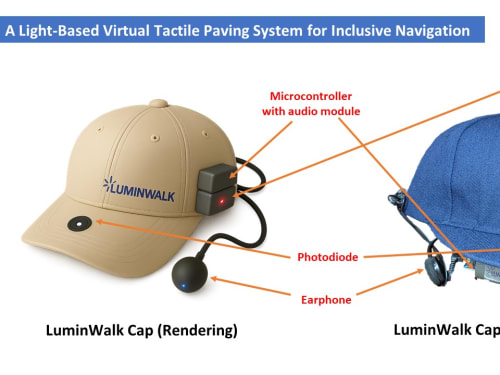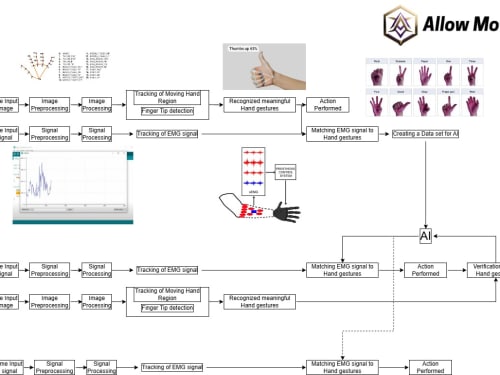Entries
Our Focus:
Current communication systems for paralyzed individuals primarily rely on assistive technologies such as eye-tracking devices, speech-generating systems, and muscle-based switches. These tools require some residual physical ability and often suffer from slow response times and limited vocabulary. In battlefield communication, soldiers typically rely on radio-based voice transmission or hand signals.
Many public and indoor spaces still lack tactile paving for the visually impaired due to its installation complexity, inflexibility and high cost. To address this, we propose LuminWalk - a wearable cap system that leverages existing lighting infrastructure by transforming conventional LED lamps into light-based virtual tactile paving.
This proposal outlines a novel quantum-inspired AI chip architecture for implementing SGS.ai systems in hardware. The design leverages concepts from quantum mechanics (particularly entanglement and superposition) to create a stochastic, energy-efficient computing paradigm that bridges classical AI with quantum-inspired relational processing.
At its core,
ECE directly converts heat into electricity with high thermal efficiency.
Different from traditional direct energy with low efficiency, ECE forces thermal electrons cycling through a Carnot cycle with high efficiency.
By using electronic resonant tank, switches and thermionic tube (with thousands of cells array),
Firefighters in high-pressure, high-risk environments face significant mental health risks. This project uses vibroacoustic therapy, developed through research, to relieve stress. The design focuses on professional image, high-stress routines, and ergonomics.
This project initially analyzed existing solutions like the buddy system and psychological counseling but found them inefficient.
SUPERSONIC AIRCRAFT PROPULSION PROBLEM
A major challenge confronting the development of supersonic passenger aircraft is the need for a propulsion system which can:
meet the current stringent stage 5 noise requirements during takeoff and landing;
operate efficiently at subsonic and supersonic speeds.
THE PROPOSED PROPULSION SYSTEM
This chassis design provides for: 3 pairs of wheels that are arranged asymmetrically to each other.
The purpose of this design is to create two stages of touching the landing gear with the runway, which should ensure a softer landing of the airliner.
The principle is as follows: first, the 1st and 3rd pair of wheels must touch the ground,
Allow Motion revolutionizes upper-limb prosthetics with a modular, 3D-printed myoelectric system that adapts to any amputation level—from partial hand to full arm—via customizable, lightweight designs. By integrating AI-driven gesture recognition and 3D scanning of residual limbs, it eliminates the need for invasive surgery or pre-programmed patterns, enabling seamless human-machine interaction.
Heliosync's invention reduces the cost of concentrating solar power (CSP) and improves its efficiency.
In CSP, a multitude of sun-tracking mirrors (heliostats) direct sunlight onto a central receiver at a distance of up to about a kilometer.
Typically, heliostats follow predetermined trajectories in an open loop. In order to reliably hit the receiver, the heliostats then need to be built massively, i.e.,
Page 29 of 44





.jpg)



